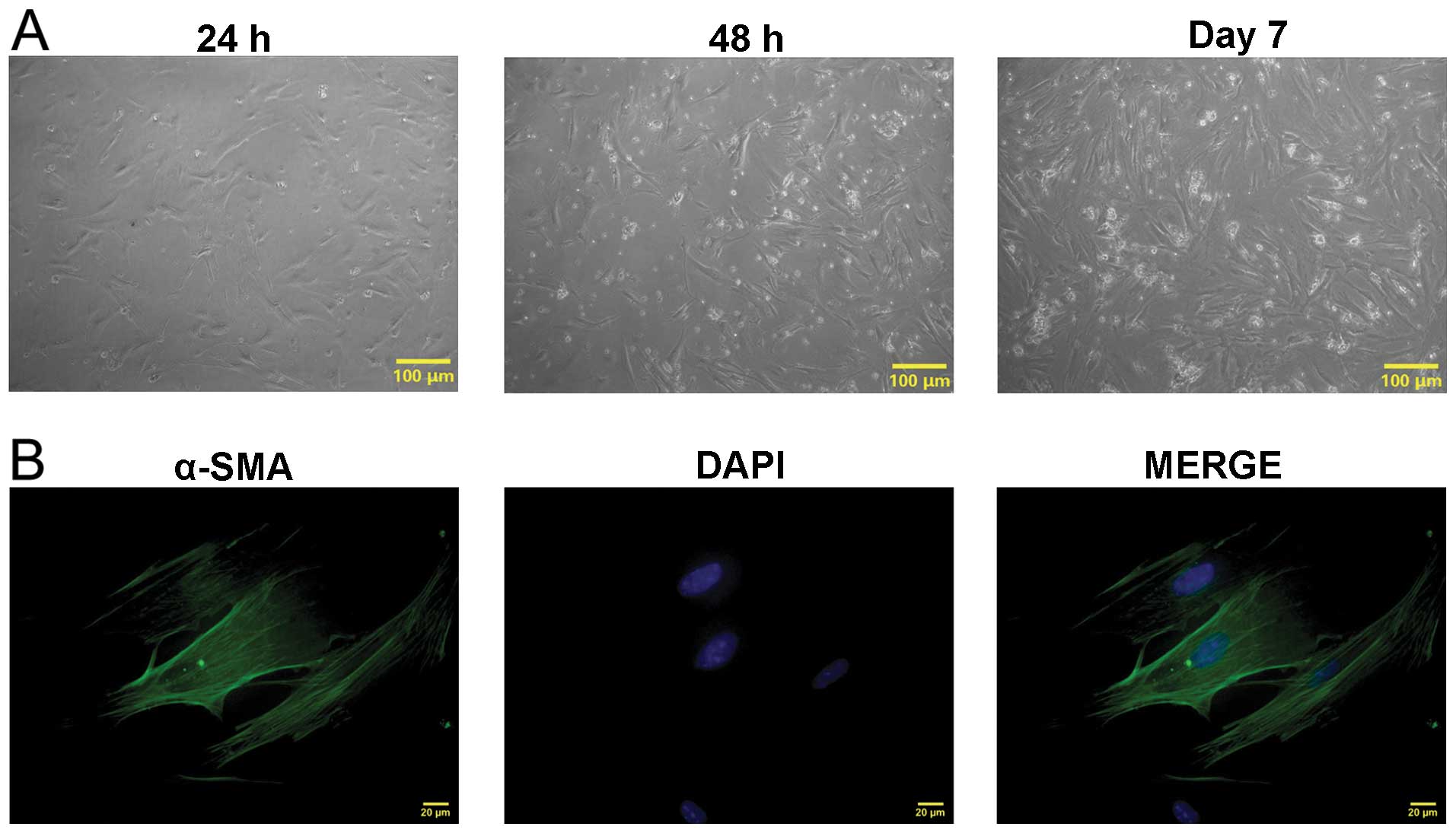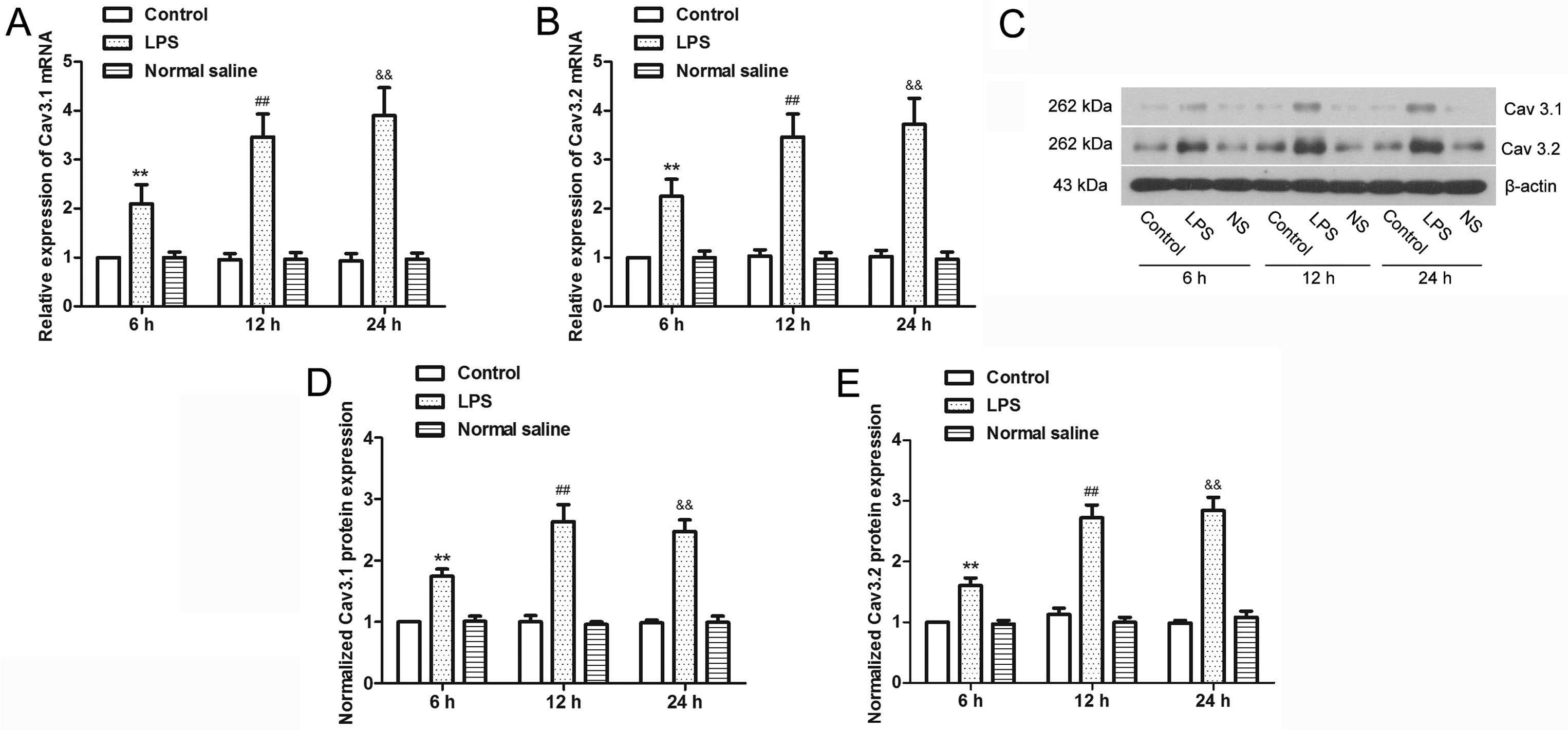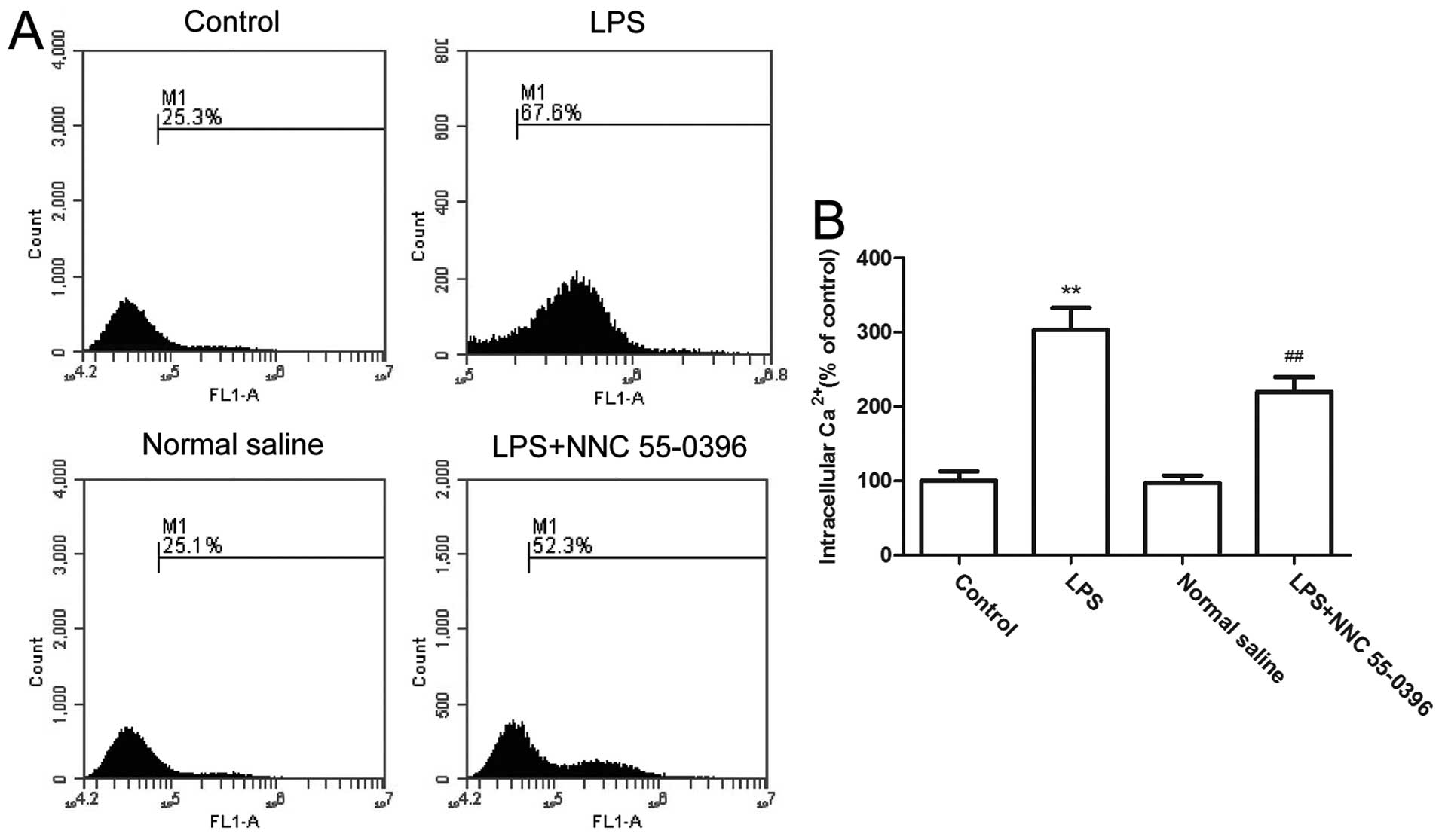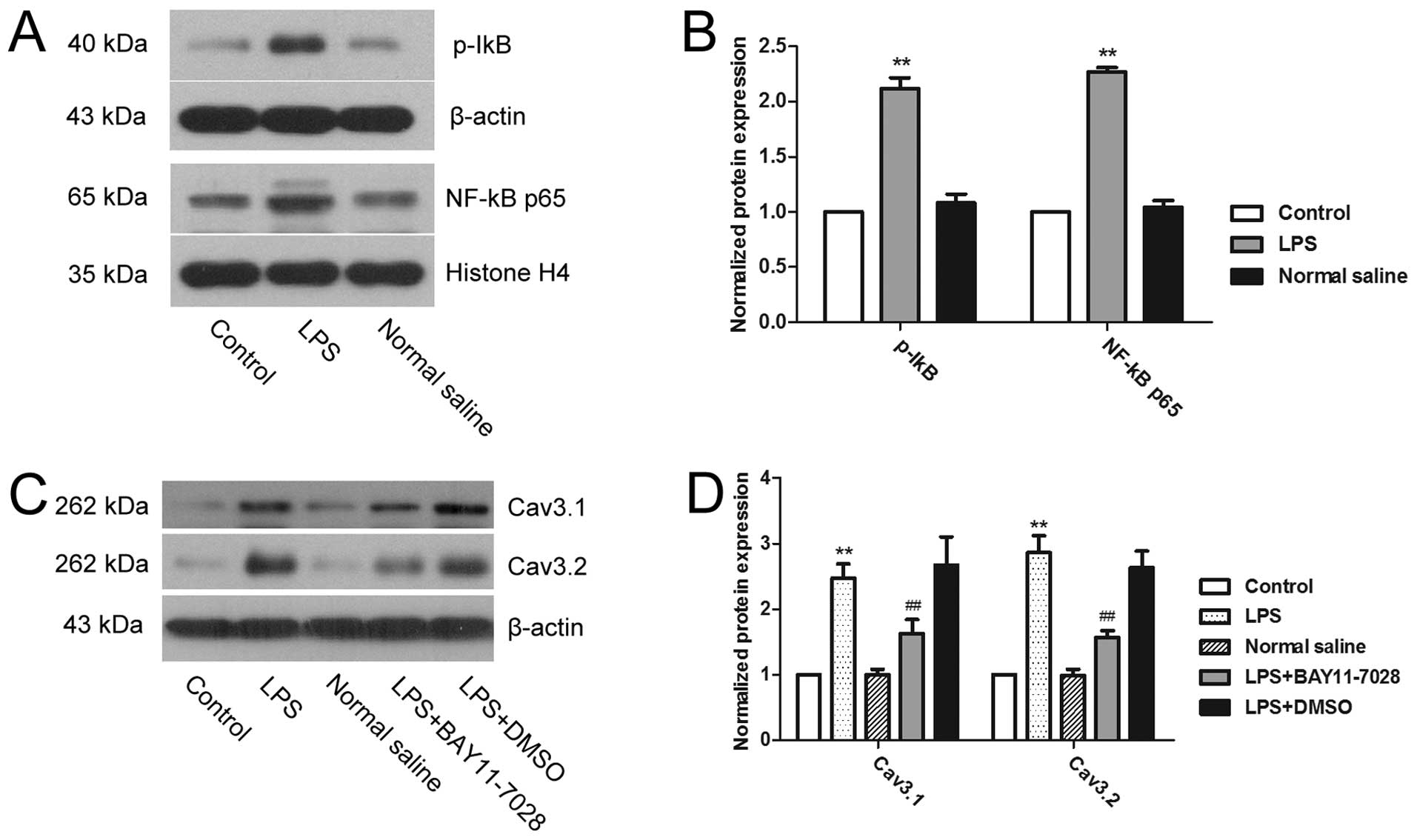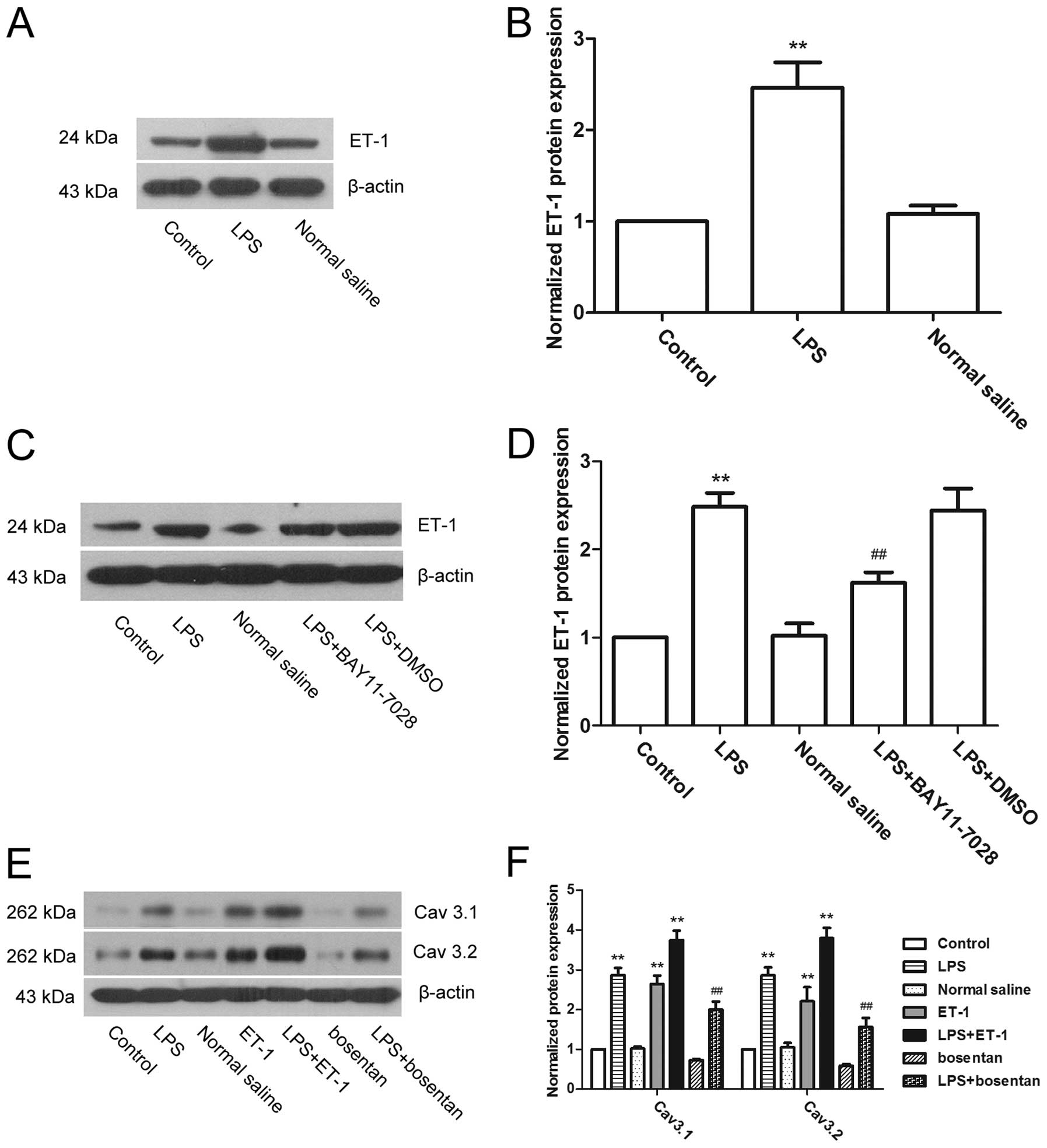Lipopolysaccharides upregulate calcium concentration in mouse uterine smooth muscle cells through the T-type calcium channels
- Authors:
- Published online on: December 29, 2014 https://doi.org/10.3892/ijmm.2014.2054
- Pages: 784-790
Metrics: Total
Views: 0 (Spandidos Publications: | PMC Statistics: )
Total PDF Downloads: 0 (Spandidos Publications: | PMC Statistics: )
Abstract
Infection is a significant cause of preterm birth. Abnormal changes in intracellular calcium signals are the ultimate triggers of early uterine contractions that result in preterm birth. T‑type calcium channels play an important role in the pathogenesis of cancer, as well as endocrine and cardiovascular diseases. However, there are limited studies on their role in uterine contractions and parturition. In the present study, mouse uterine smooth muscle cells were isolated and treated with lipopolysaccharides (LPS) to mimic the microenvironment of uterine infection in vitro to investigate the role of T‑type calcium channels in the process of infection‑induced preterm birth. The results from quantitative polymerase chain reaction and western blot analysis showed that LPS significantly induced the expression of the Cav3.1 and Cav3.2 subtypes of T‑type calcium channels. Measurements of intracellular calcium concentration showed a significant increase in response to LPS. However, these effects can be reversed by T‑type calcium channel blockers. Western blot analysis further indicated that LPS induced the activation of the nuclear factor (NF)‑κB signaling pathway, and endothelin‑1 (ET‑1) was significantly upregulated, whereas NF‑κB inhibitors significantly inhibited the LPS‑induced upregulation of Cav3.1, Cav3.2 and ET‑1 expression. In addition, ET‑1 directly induced Cav3.1 and Cav3.2 expression, whereas ET‑1 antagonists inhibited the LPS‑induced upregulation of Cav3.1 and Cav3.2 expression. In conclusion, the present study demonstrates that infection triggers the upregulation of T‑type calcium channels and promotes calcium influx. This process relies on the activation of the NF‑κB/ET‑1 signaling pathway. The T‑type calcium channel is expected to become an effective target for the prevention of infection‑induced preterm birth.



